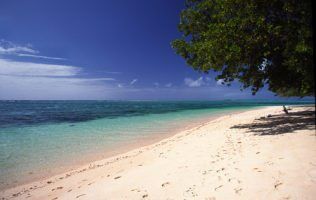

Environment
5 Best Ecotourism Destinations
Is your idea of the perfect trip one where you have the opportunity to get up close and personal with nature? If so, then you may be an eco-adventurer. There are many destinations that make ideal travel spots for ecotourism. From a colourful coral reef and the fabulous fjords to the lush jungles and sprawling savannas, these five regions that encompass some of the world’s most distinctive ecosystems.
It’s not enough for a destination to be blessed with natural resources. It’s also important that the resources are cared for. These five destinations have their own unique biodiversity and the local community has a commitment to maintaining the integrity and beauty of the area through sustainable tourism.
Remember as a visitor you must do your part. The areas that offer the most ecological diversity are also some of the most threatened regions of the world. If you choose to visit, make sure you follow our green travel tips to ensure the places you visit remain unspoiled, so that their beauty can last for years to come and provide pleasure to other visitors.
Palau
The island nation is Palau is known as the world’s foremost diving destination. Its popularity goes back long before it was featured on the 10th season of “Survivor”. The crystal clear sea provides a colourful underwater wonderland. There are more than 500 species of coral in Palau’s waters and 1,400 types of fish. On land, a traveller can trek into the dense jungle or spend the day wandering along the unspoiled beach.
Palau is located in the westernmost corner of Micronesia. Its remote location has shielded its natural resources and kept mass tourism from affecting the cultural traditions of the locals. The local population works to ensure this island paradise stays pristine.
Approximately 460 miles of lagoon waters and reefs are no-fishing zones. This has allowed many of the endangered fish species to repopulate the area. Almost two dozen protected areas are managed by the Palau Conservation Society. They encourage sustainable development in order to defend the Palau’s fragile ecosystem.
Norwegian Fjords
With snow-capped mountains, crystal clear water and tumbling waterfalls, the famous Norwegian Fjords are known for their pristine beauty. Their strict environment regulations and remote locations have preserved the Fjords, which is one of the region’s most well-known natural attraction. The Fjords is home to many fishing villages, where local cultural traditions continue to thrive after hundreds of years.
There is a wide variety or wildlife including porpoises, seals, eagles, and seabirds. A visitor to the Fjords may enjoy a scenic boat ride through the fjords or a hike or bike through rugged terrain.
Norway is an international leader in environmental policy. Norway has used regulations to control whaling, fishing, sealing and petroleum industries, in order to protect its coastline.
Costa Rica
There’s a good reason why Cost Rica is synonymous with the term “ecotourism”. Costa Rica has black sand beaches, rushing river rapids, misty cloud forests, and thick rain forests that offer the nature enthusiast, as well as the active travellers the opportunity for a number of outdoor activities.
Costa Rica is home to a vast array of creatures including sloths, jaguars, poison dart frogs, sea turtles, monkeys, and crocodiles. Most of these animals live in Costa Rica’s numerous national parks. The country is well-known for its animal and plant diversity, as well as the proliferation of wildlife refuges.
The Costa Rican Tourism Institute can help if you’d like to stay in eco-friendly accommodations. They maintain a list of green resorts, hotels, and lodges.
Nicaragua
Nicaragua has been synonymous with eco-tourism even before the term was a commonly known one. The colonial capital of Leon is home to a whole host of fantastic sites, while Lake Nicaragua is a place full of history and also showcases the areas colonial past.
Nicaragua is one of the oldest European areas in the Americas and also one of the best to see the old world charm on the new continent.
Other fantastic sustainable places to see include the Masaya Volcano National Park, where one can see inside an active crater and can enjoy the park’s beauty. It’s the perfect Nicaragua vacation.
Kerala, India
Kerala is a small state of the southwestern coast of India. It’s sometimes referred to as “God’s Own Country”. This is a label that you may soon use after visiting its lush virgin forests and clean sandy beaches.
As one of India’s most unspoiled corners, Kerala is home to hundreds of unique animal species. Nearly one-quarter of the county’s 10,000 plant species are located in Kerala. This is the home to the nilgiri tahr, an endangered mountain goat that lives in Rajmala National Park. In the Lake Periyar Wildlife Sanctuary, bison, wild boars, and elephants roam free.
Kerala’s ecosystem had been threatened in the past by excessive foresting. However, the state’s farms are now protected. Tourism officials are also encouraging environmentally responsible travel to Kerala.






























